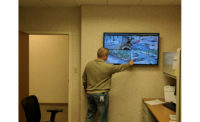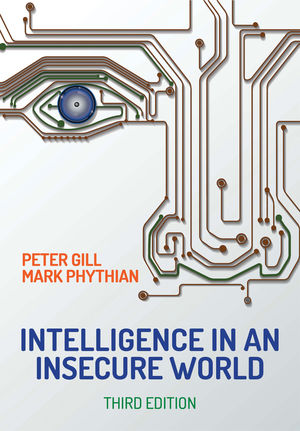
|
| In true Hollywood fashion, integrator Post Alarm overcame each of the many obstacles it encountered, including the less-than-ideal lighting conditions of the building’s rooftop basketball court, when installing a video system at the Ricardo Montalban Foundation Theatre in Los Angeles. Photo courtesy of the Ricardo Montalban Foundation Theatre |
When installing a new video surveillance system for the Ricardo Montalban Foundation Theatre, Los Angeles-based systems integrator Post Alarm found itself in a bit of real-life Hollywood drama. From conception to completion, the integrator faced a number of challenges, including challenging lighting conditions, long wire runs and concrete walls. And in true Hollywood fashion, the company overcame each one to produce a happy ending for the theater.
The first challenge arose when Gil Smith, the theatre’s executive director, did not have a clear vision of what he wanted the system to do. He did, however, know exactly what brand of cameras he wanted installed, says Rich Buchanan, an account executive with Post Alarm.
“Gil is a professional photographer, so he’s very detail-oriented. He has strong ties to Canon as a photographer, and he was the one who recommended them for this project,” Buchanan says. “But at the same time, he didn’t have a crystal clear idea what he wanted to see — and security camera images typically don’t compare to what a professional photographer is used to seeing.”
Next came the question of camera placement. Because of the potential for vandalism in the busy urban neighborhood surrounding the theater, they had to be placed very high up. “That could have meant a lot of time going up and down ladders to adjust them,” Buchanan says.
Fortunately, it was Smith’s push for Canon cameras that helped overcome that obstacle. The cameras offer a remote adjustment feature, which allows them to be fine-tuned from anywhere using a Web interface — a feature Buchanan says he didn’t even know existed until Post Alarm started looking at the cameras. “Once I saw that, I was sold,” he says.
Lighting was another consideration. At the front of the theater, there is a busy street, complete with streetlights and passing cars after the sun goes down. At the rear of the building is a parking lot where new lighting had been installed, but the area was still poorly lit. There are also dimly lit alleys along the sides of the building.
“Obviously, these are not the ideal scenarios, but the Canon cameras have performed very well in those situations,” Buchanan says.
On the roof, Nike has installed a basketball court, which Smith also wanted to be able to see. Soccer games also take place on the roof, which presented the added dimension of protecting the cameras themselves.
“We had to deal with sunrises and sunsets and the cameras had to be high and vandal-proof because they have soccer games up there, which means they can be hit,” he says.
Remote adjustment also saved the day — and the cost of a site visit – when the theater had a problem in one of the adjacent alleys. Because the camera was installed halfway down that alley, it wasn’t able to capture images of a homeless person who was sleeping there, so Smith asked Buchanan to reposition the camera for a weekend.
“I would have had to send two guys down there, so we saved on a service call,” Buchanan describes. “Once you install a camera and see the views, you always have to readjust it, so we’ve saved on quite a few service calls.”
One of the most menacing challenges, however, came in the form of wiring. In Hollywood, aesthetics are everything, so Post Alarm wanted to make sure no wiring was visible. However, The Montalban Theatre was built in the 1920s, mostly of concrete, which complicated that task substantially. With the combined efforts of technology and ingenuity, the integrator was able to achieve that goal.
“We were able to snake the wiring under the floor under the theater seats. Those walls are about two feet thick, so you could almost climb down inside them. At the back side of the stage where there are risers, we went up through the wall to the second floor to the mezzanine,” Buchanan says. “Luckily, the cameras were PoE, so we only had to install a single Cat5 wire to each. That limited the amount of wire we had to pull through that space. It was cheaper and saved on labor with no separate power lines.
“We were able to hide all the wiring inside. Not only that, but there are no exposed conduits on the outside,” he adds.
Finally, Post Alarm faced another wiring-related challenge in the form of tying the system into an Avigilon recorder that was placed in a less-than-ideal location.
“Where Gil wanted the main recorder was in the basement at the rear of the building. So we had to run wire down three or four floors, and all the way from the very front corner of the building,” Buchanan says. “The wire runs were much longer because of the building itself. There are wires all over that building, and we used every nook and cranny we could find.”
So how long did the project take? Three days with a two-man crew, Buchanan says.
As is the case in the movies, there has been a happy ending to this story. Since the system was installed, it has been running smoothly and Smith has been pleased with its performance — particularly the remote viewing capability.
“When an alarm is tripped, he can pick up his iPad and quickly see what’s going on. He’s had a couple break-ins already where that’s been helpful,” Buchanan describes.






